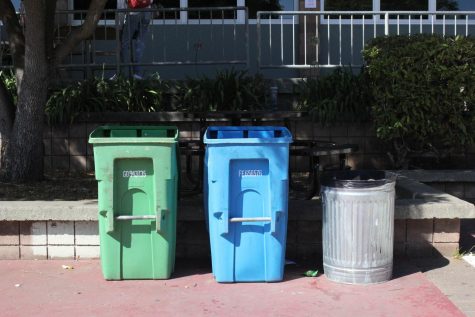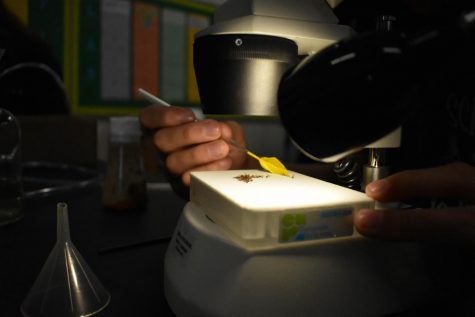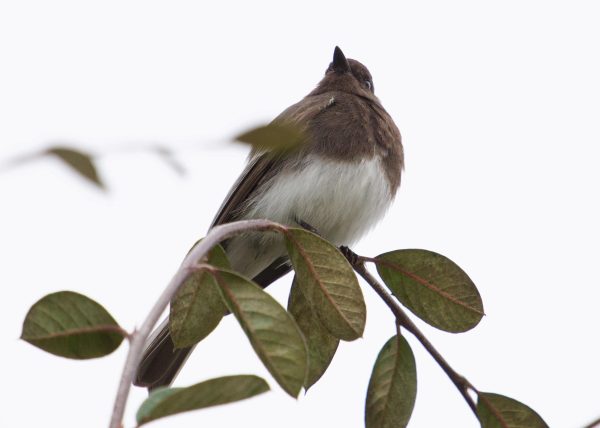Fruit Fly Fiasco
“I’m not a fan of insects in my home life at all,” math teacher Ian Knight said. “Coming [to Lowell] and having fruit flies was a huge punch to the gut.” Knight is not alone in his distress over Lowell’s seemingly growing fruit fly infestation. As insects swarm around lunch tables and teachers hurriedly set up vinegar traps, many Lowellites have rushed to place the blame on the new fruit fly lab course called Scientific Research Methods in Drosophila Melanogaster. In truth, however, weather conditions and composting issues are the root of Lowell’s current fly fiasco.
This school year began with a heat wave, which, according to Anjana Amirapu, who is the teacher of the fruit fly course, served as a catalyst for fruit fly reproduction. When the temperature is warm, fruit flies have a gestation period of about ten days, while when the temperature is cooler, gestation can take up to three weeks. As a result of this sped up reproduction cycle, Lowell was hit with the current elevated fly population.
Senior Jordyn Kosai, a student in the fruit fly class, has also observed how the heat combined with Lowell’s closed compost bins has created a perfect storm for fly infestation. “[The flies] are coming from the compost bins recently because of the humid environment and closed lids,” she said. These components allow fruit flies to lay large quantities of eggs, leaving larvae that can only be removed through washing the bins down with bleach.

Compost bins have served as the ideal breeding ground for fruit flies.
According to Amirapu, accusations that the fruit fly class is at fault for flies on campus are not consistent with the course’s wealth of precautionary procedures. The class, which is based off of a lab performed at Stanford University, involves students researching fruit fly genomes that hold key similarities to human genes. During class, students control the flies by putting them to sleep with carbon dioxide gas before taking the flies out of their tubes to examine them under microscopes. To ensure that no flies get away, students use instruments to sweep the bugs back in their tubes, and if necessary, kill the flies with sticky pads. If one or two stray flies were to escape, Amirapu says they could not live long outside of the tube they have grown accustomed to living in. This is why when walking into the lab, one is not confronted with swarms of buzzing flies.“We have to keep it pretty contained in here because it’s genetics,” said Kosai.

Students in Amirapu’s class examine the sedated flies.
As the semester progresses and the weather begins to cool down, Amirapu predicts the school’s fruit fly problem will reduce to average levels. In the meantime, she urges Lowellites against erroneously pointing fingers at the fruit fly class. “[People] don’t understand the science behind fruit flies and how we handle and manage the flies,” Amirapu said. “There is always a little ignorance around it, people just don’t know.”












